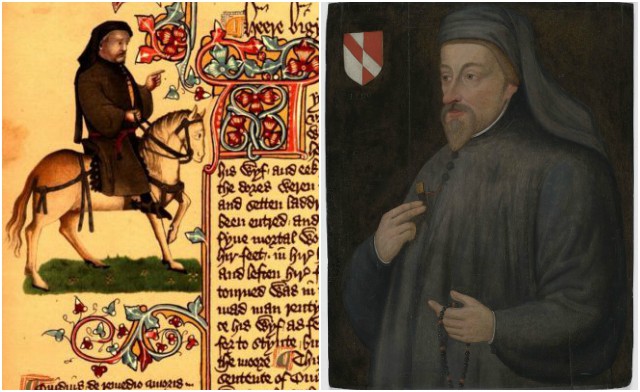The precise date of Geoffrey Chaucer’s birth is unknown, but the evidence suggests that he was born about 1345 to John Chaucer and Agnes Copton. His father was a prosperous wine merchant and deputy to the king’s butler.
Details of his early life are unknown, but it is likely that he attended school at St. Paul’s Cathedral. Chaucer became a public servant to Countess Elizabeth of Ulster, the Duke of Clarence’s wife. This gave Chaucer a chance to remain in the close court circle where he stayed throughout his life serving as a courtier, a diplomat, a civil servant, and a collector of scrap metal.
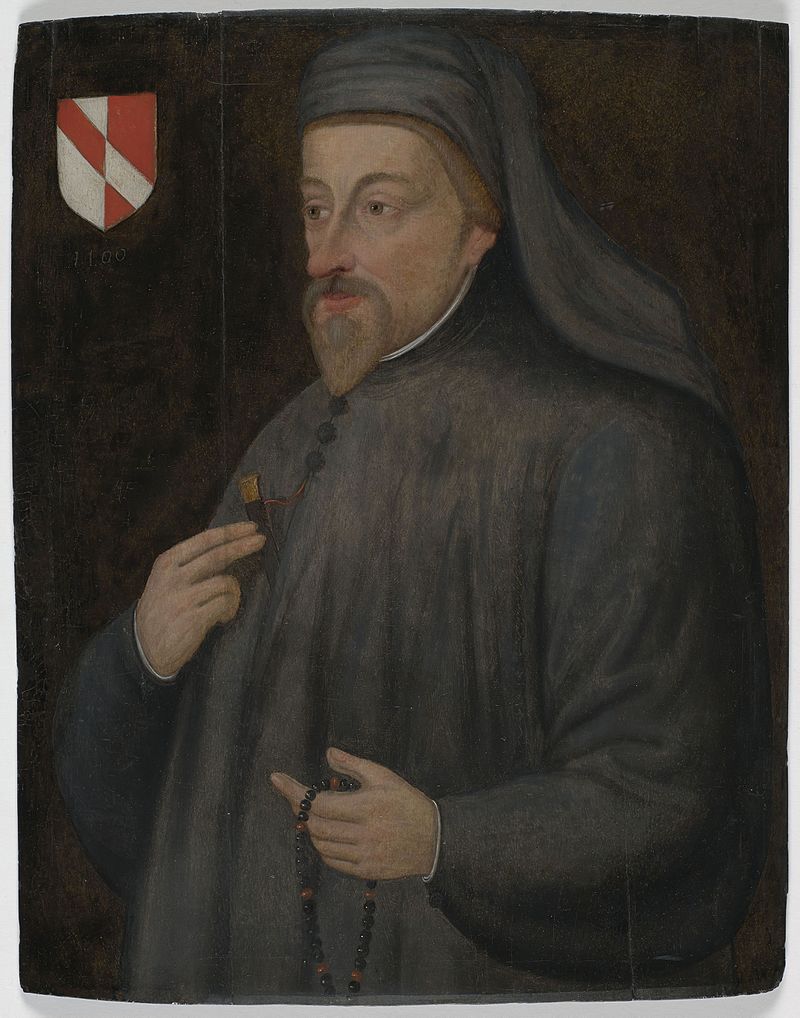
In 1359 Chaucer joined the English army’s invasion of France during the Hundred Years’ War, and at Rethel he was captured for ransom. Thanks to Chaucer’s royal connections, Edward III paid the ransom for his release. Not much is known of Chaucer for the next six years but he was probably in the king’s service since on the 10th of June 1367 Edward granted him a pension of twenty marks for his past and future services.
Chaucer married Philipa de Roet in 1366, who was a lady-in-waiting to Edward III’s wife. A year after his marriage he was sent by King Edward III on diplomatic missions to France, Genoa, and Florence. While he was in Italy he discovered the works of authors such as Dante, Boccaccio, and Froissart.
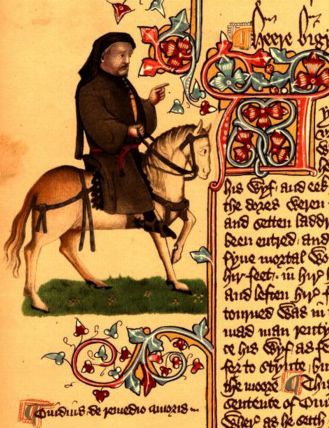
One of his earliest known works was an elegy for the deceased wife of John of Gaunt, Book of the Duchesse written in 1369 or 1370, which was written for intellectual and sophisticated people. Other early works by Chaucer were Anelida and Arcite and The House of Fame.
He was named Controller of Customs on wools, skins, and hides for the port of London in 1374. During this period of his life, Chaucer wrote Parlement of Foules, The Legend of Good Women and Troilus and Criseyde. Later he established residence in Kent, where he was elected a justice of the peace and a member of Parliament in 1386.
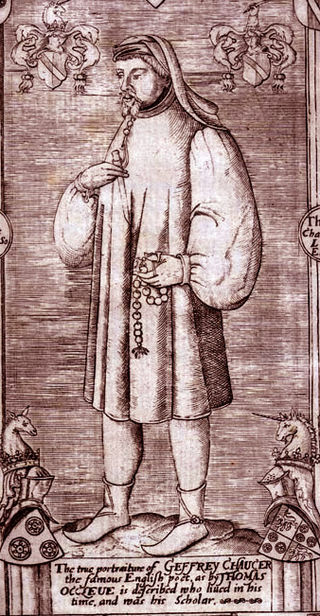
In recognition of his poetic talent, King Edward III of England granted Chaucer “a gallon of wine daily for the rest of his life” for some unspecified task.
Between 1387 and 1400 Chaucer was working on his most famous work, The Canterbury Tales, in which a diverse group of people recount stories to pass the time on a pilgrimage to Canterbury.
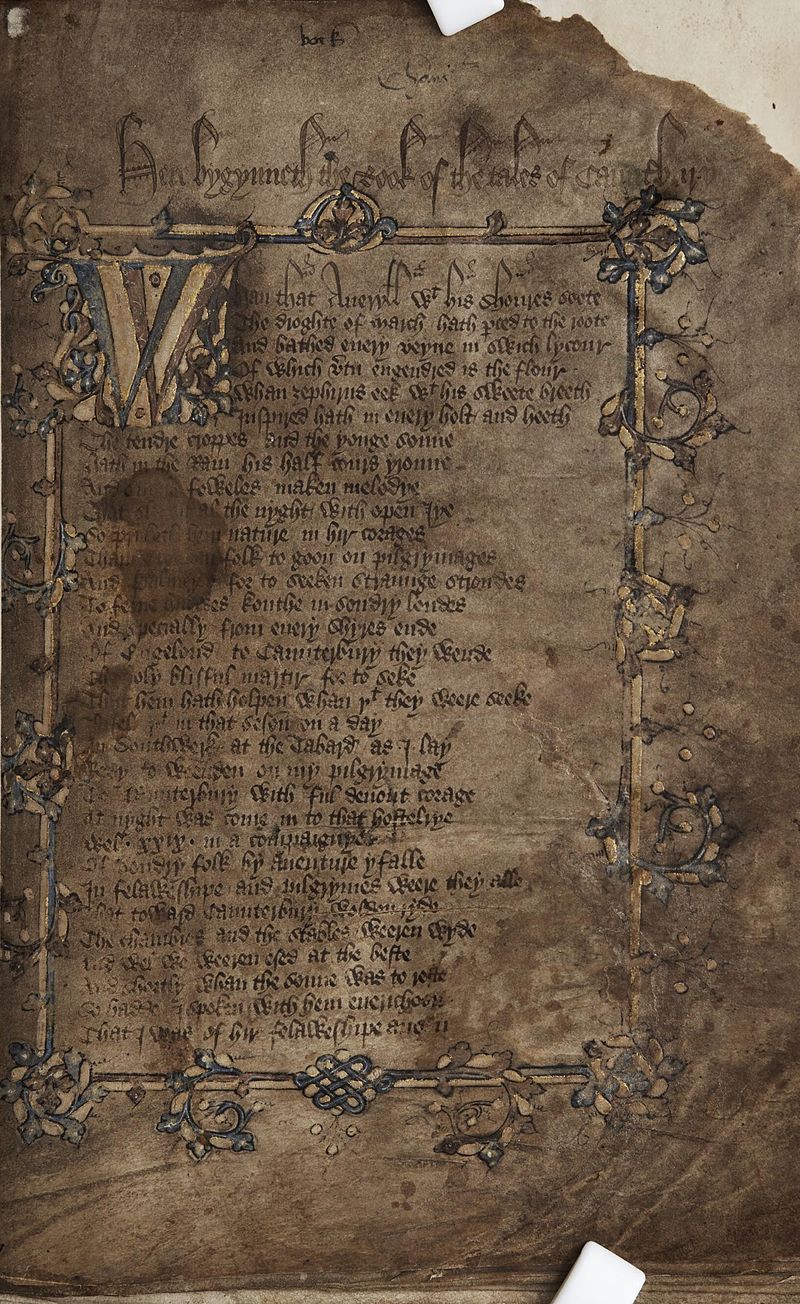
Chaucer who is famous for his metrical originality and is known to have invented the rhyme royal, was also a pioneer of the five-stress line, a decasyllabic cousin to the iambic pentameter. He is known as “The Father of Literature” and widely considered the greatest English poet of the Middle Ages.
Geoffrey Chaucer died of unknown causes in London on October 25, 1400. He was the first poet buried in Westminster Abbey and his gravestone became the center of what was to be called Poet’s Corner.
